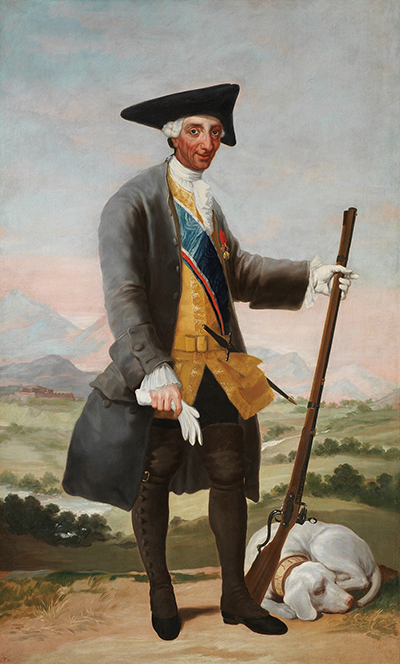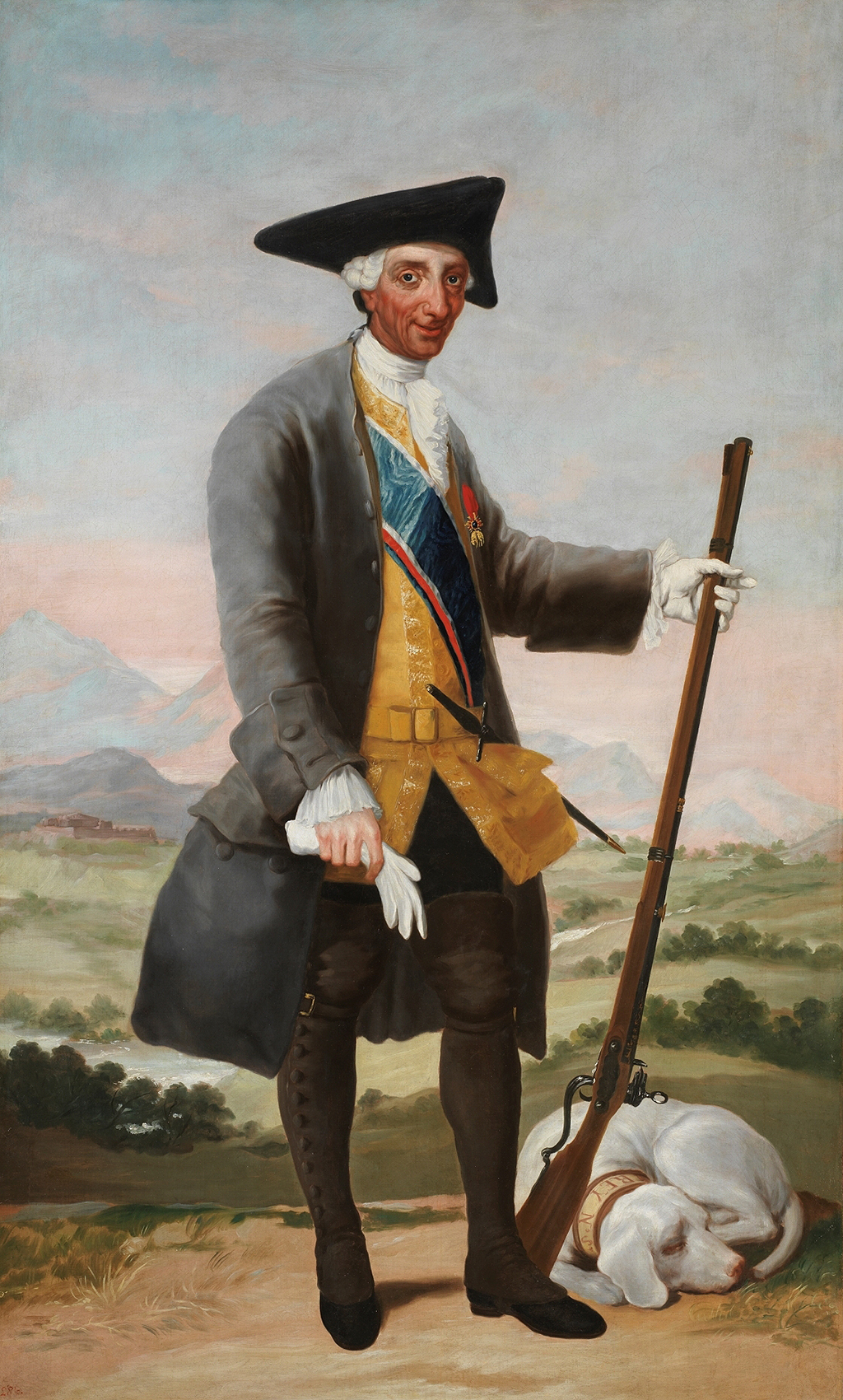The face that looks out at us from Francisco di Goya's portrait of Charles III in Hunting Dress has a humorous yet penetrating gaze. It befits a monarch who was acclaimed for the enlightenment and success of his Spanish reign.
His clothing is that of a hunter, but clearly one of noble status. Francisco di Goya’s realistic portrait, created ca. 1786, confirmed that the artist's talents were worthy of recognition by the Spanish court. He was created court portraitist as a consequence of this work, which now hangs in the Museo del Prado, Madrid. Charles III of Spain, who was born in 1716 and ruled that country from 1759 until his death in 1788, was also ruler of several other territories. As Charles of Bourbon he ruled Naples from 1734–1759 and also Sicily, where he was known as Charles III, from 1735–1759. Noted for his belief in enlightened absolutism and the centralisation of power across the Spanish Empire, Charles III is widely recognised by historians as being a successful ruler. Yet ironically, he was never expected to rule Spain.
Fourth in line to the throne, it was only the deaths of his three elder half-brothers that set him at the head of a charismatic global dynasty. Related through his mother to powerful Italian families such as the Farnese and di Medici, and through his father to the Bourbons, his own marriage connected him to the northern European powerhouses of Poland and Saxony. In Goya’s portrait we see this mighty yet ordinary-looking ruler at leisure with his handsome hunting dog snoozing quietly at his feet. It is the face of a monarch who maintains his own vigilance so that his subjects may live in peace. Unprepossessing and even bizarre though his features are, it is the countenance of a ruler who contended with the authority of both the Papal see and the Holy Roman Empire. Hunting was a valued leisure activity, a test of both intelligence and physical prowess.
Depicted towards the end of his reign and his life, his aura is still of competence and vigour. His hunting dress of cutaway coat, long waistcoat, buttoned gaiters and tricorn hat is practical enough, but it also provides an opportunity for authoritative display. Charles wears the sashes of various orders. That of the Golden Fleece is perhaps the most potent reminder of the wealth produced by Spain’s world empire. Clearly inspired by the Portrait of Charles III by Anton Raphael Mengs, the portrait shows Goya at the height of his period of courtly influence.





